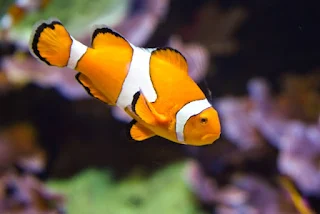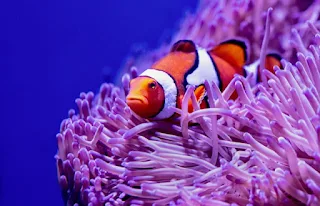Discovering the Charm of Clownfish
Welcome to the vibrant world of clownfish! These tiny yet charismatic creatures have captured the hearts of many with their dazzling colors and intriguing behaviors. Join me on a journey beneath the waves as we explore this fascinating world.
A Splash of Color:
The first thing that strikes you about clownfish is undoubtedly their stunning appearance.
With vibrant orange, yellow, and white hues, these fish resemble a living work of art swaying gracefully among the coral reefs.
Their distinctive markings make them easy to spot amidst the bustling underwater ecosystem.
Finding Nemo:
Thanks to popular culture, many of us are familiar with the clownfish from the beloved animated film Finding Nemo.
While the movie portrayed their adventurous spirit and strong familial bonds, there's much more to these creatures than meets the eye.
Clownfish are not just cute sidekicks but intricate beings with a fascinating way of life.
Home Sweet Home:
Clownfish are primarily found in the warm waters of the Indian and Pacific Oceans, particularly in coral reefs.
These bustling habitats provide ample shelter and food for these little fish, who form symbiotic relationships with certain species of sea anemones.
An Unlikely Partnership:
One of the most remarkable aspects of clownfish behavior is their unique relationship with sea anemones.
Despite the anemone's venomous tentacles, clownfish are immune to their sting. In return for protection from predators, clownfish offer the anemone nutrients in the form of waste and food scraps.
It's a perfect example of mutualism in nature, where both species benefit from the partnership.
Family Matters:
Clownfish are also known for their intricate social structures. Within a group of clownfish, there is a strict hierarchy with one dominant female, followed by a dominant male, and several subordinate males.
If the dominant female dies or is removed, the dominant male will undergo a sex change and take her place, demonstrating the adaptability of these fish.
A Fishy Tale of Parenting:
When it comes to parenting, clownfish take their responsibilities seriously. After laying their eggs on a flat surface close to their anemone home, the male clownfish diligently guards the nest and fans the eggs to ensure they receive enough oxygen.
Once the eggs hatch, both parents work together to protect and care for their offspring until they are old enough to fend for themselves.
Threats to Survival:
Despite their resilience, clownfish face numerous threats in the wild. To survive, they must overcome challenges such as pollution, habitat destruction, and overfishing.
Climate change also poses a significant threat, as rising sea temperatures and ocean acidification can disrupt the delicate balance of coral reef ecosystems on which clownfish depend.
Conservation Efforts:
Conservation efforts are underway around the world to protect clownfish and their habitat. Marine protected areas, sustainable fishing practices, and public awareness campaigns are crucial in safeguarding these iconic creatures for future generations.
The Magic of Clownfish:
In conclusion, clownfish are much more than just colorful characters in a movie. They are intelligent, resilient, and vital contributors to the health of coral reef ecosystems.
By learning more about these fascinating fish and supporting conservation efforts, we can ensure that the magic of clownfish continues to enchant and inspire us for years to come.
So, the next time you find yourself diving into the crystal-clear waters of the ocean, keep an eye out for these enchanting creatures. You never know what secrets they might reveal beneath the waves.




Comments
Post a Comment